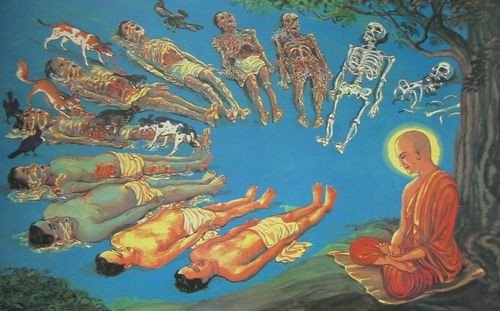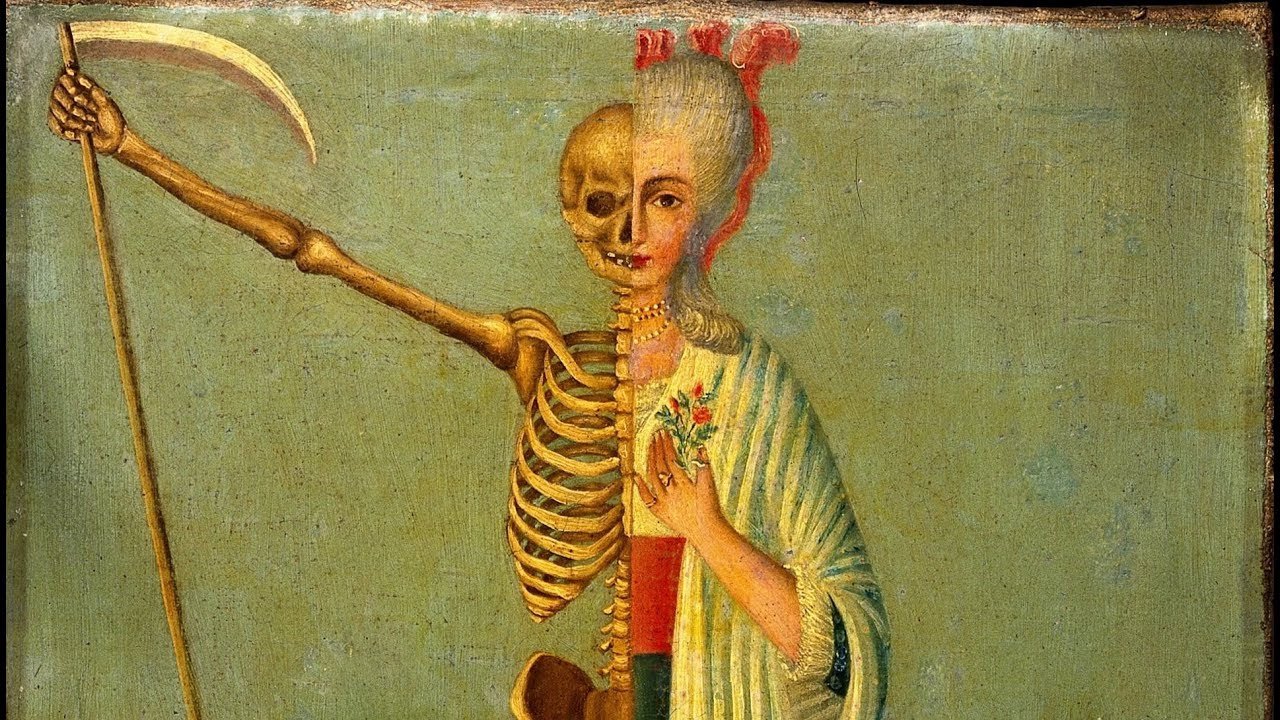On Death, Decay and the Meaning of Life
Most of the year our culture obsessively shies away from death. But for one day every autumn, a brief window opens to acknowledge, allow and even celebrate the timeless fact of time’s most faithful promise.
From the memento mori of Christian cultures to the maranasati “death awareness” of the Buddha, numerous ancient philosophers and spiritual traditions insist on the value of such contemplation. Democritus would frequent tombs, Seneca insisted that ‘we are dying every day,’ and some of the Buddha's most explicit meditation instructions advise the following graphic visualisation:
“imagine a corpse thrown aside in a charnel ground - one, two, or three days dead, bloated, livid, and oozing matter being devoured by crows, hawks, vultures, dogs, jackals or various kinds of worms, then becoming a skeleton with flesh and blood, held together with sinews, then a fleshless skeleton smeared with blood, held together by sinews.
Then a skeleton without flesh and blood, held together with sinews, then disconnected bones scattered in all directions, and then bones bleached white, the colour of shells, then bones heaped up, more than a year old, then bones rotten and crumbling to dust. Compare your own body with it and recognise, 'this body too is of the same nature, it will be like that, it is not exempt from that fate."
- Satipatthana
Reading these descriptions remind me of an Ayahuasca ceremony I attended in which similar imagery arose spontaneously. Having been invited to set an intention for the evening, I decided on the most important one I could think of; “What is the purpose of life?
For several hours I witnessed my body interned underground, looking up through the fallen leaves on the forest floor. Insects swarmed my rotting flesh, maggots crawled through my emptied eye sockets, and my remains were packed ever closer by sprawling roots and damp earth.
Somehow it wasn’t unpleasant - it was merely factual. Even freeing. It struck me that from a plant’s perspective, the meaning of my life is to be plant food. This inversion struck me as hilariously funny. Of course the answer to such a question would depend on who was asked! So I giggled, guffawed and went back to watching my skull become home to the earth, and the unmistakable reminder:
We eat plants and animals, and with time, they will eat us.
There seem to be many lessons to be learnt from facing these facts. Sometimes the impermanence of life helps to treasure it even more. This fleeting moment, this graspless explosion of infinity, happening all around me right now, is gone as soon as it is noticed.
At other times, mortality invigorates the quest for the immortal, the timeless deathless and unborn. To discard that which cannot last, and invest instead in the everlasting.
If you feel inspired to delve deeper I invite you to follow this guided meditation by Bhikku Analayo. Then, if you’re feeling brave, to contemplate your body’s shared fate with the images of Tibetan ‘sky burials’ and charnel grounds at the bottom of the page. Warning: these images are very explicit, including human corpses, vultures and more.
I’d be curious to hear any insights gained.
If you'd like to continue the shared quest together I’m happy to have two of my favourite guides returning this month.
Richard Lang will be presenting a two-hour workshop on the Headless Way, Sunday the 14th of Nov. Every time I attend one of Richard’s workshops, even though the material is by now very familiar, I find myself bewildered, bewitched and enthralled.
And whilst Richard’s approach is immediate, I also love that which can be inferred. And for that, I know of no more eloquent interlocutor than Bernardo Kastrup.
Starting Tues the 16th, we’ll have four weeks to pose the most profound questions we can, and enjoy the exquisite perspectives that he brings. Although Bernardo claims not to be a spiritual teacher, for me at least, I’ve found each session to be a transcendent experience and a gateway to deeper meditation and a more enchanted life.
I hope you can join one, or both, or perhaps cross paths another time!
Click to move between images:
I recommend gazing at each image and considering this body could be yours. If this gets too much just stop, and check out the previous blog on Self Care.













